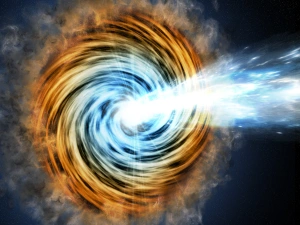The DUNE project at Fermi Lab
Cosmic neutrinos are some of the most elusive particles in the universe. Scientists have been searching for the origin of these mysterious particles for many years. In this article, we will explore the proposed experiment to discover the origin of cosmic neutrinos and the significance of this scientific breakthrough.

What are Neutrinos?
Neutrinos are subatomic particles that are produced in the core of stars and in some radioactive decay processes. They are incredibly small, with a mass less than one-millionth that of an electron. Neutrinos are also incredibly difficult to detect because they interact very weakly with other particles. Despite these challenges, scientists have been able to study neutrinos and gain insights into their properties.
The Three Types of Neutrinos
There are three types of neutrinos: electron neutrinos, muon neutrinos, and tau neutrinos. Each type is associated with a corresponding type of lepton, which is a type of subatomic particle that does not participate in the strong nuclear force. These different types of neutrinos can oscillate between one another, changing from one type to another as they travel through space. This phenomenon is known as neutrino oscillation and has provided scientists with important clues about the nature of neutrinos.
Neutrinos in the Study of the Universe
Neutrinos play a key role in our understanding of the universe and its evolution. They are produced in massive quantities in the core of stars, and they play a crucial role in the process of star formation and evolution. Neutrinos can also provide insights into the structure and composition of the universe, including dark matter and dark energy. Scientists can use neutrinos to study the behavior of supernovae and the formation of black holes, among other phenomena.
Neutrinos and the Study of the Laws of Physics
Neutrinos are also an important tool in the study of the laws of physics. Scientists have used neutrinos to study the properties of weak interactions, which are one of the four fundamental forces of nature. They have also used neutrinos to study the properties of neutrino oscillation and to search for evidence of physics beyond the Standard Model, which is the current theoretical framework that describes the behavior of subatomic particles.
The Future of Neutrino Research
Neutrino research is an active area of study, and scientists continue to make new discoveries and gain new insights into these mysterious particles. The construction of new neutrino detectors, such as the Deep Underground Neutrino Experiment (DUNE) in the United States, will provide scientists with the tools they need to study neutrinos in even greater detail. The study of neutrinos will likely play a crucial role in our understanding of the universe and the laws of physics for many years to come.
The DUNE Experiment
The Deep Underground Neutrino Experiment (DUNE) is a cutting-edge research project aimed at uncovering the mysteries of the universe. The experiment takes advantage of the unique properties of neutrinos, tiny particles that are produced in the sun and other celestial bodies. By detecting these elusive particles, scientists hope to gain new insights into the nature of matter and energy, as well as the evolution of the universe.
The Design of the DUNE Experiment
The DUNE experiment is designed to take advantage of the unique properties of neutrinos. It will use a massive detector located a mile underground to capture and study these elusive particles. The detector will be filled with a special liquid that is capable of detecting the interactions of neutrinos. In addition, the detector will be surrounded by layers of shielding to protect it from interference from other particles and radiation.
The Potential Benefits of the DUNE Experiment
The DUNE experiment holds tremendous potential for advancing our understanding of the universe. By capturing and studying neutrinos, scientists hope to gain new insights into the nature of matter and energy, as well as the evolution of the universe. In addition, the experiment may lead to new technologies and applications in fields such as medicine, energy, and computing.
Conclusion
The Deep Underground Neutrino Experiment (DUNE) is a cutting-edge research project that holds great promise for advancing our understanding of the universe. By capturing and studying neutrinos, scientists hope to gain new insights into the nature of matter and energy, as well as the evolution of the universe. We look forward to the results of this exciting experiment and the new knowledge it will bring.